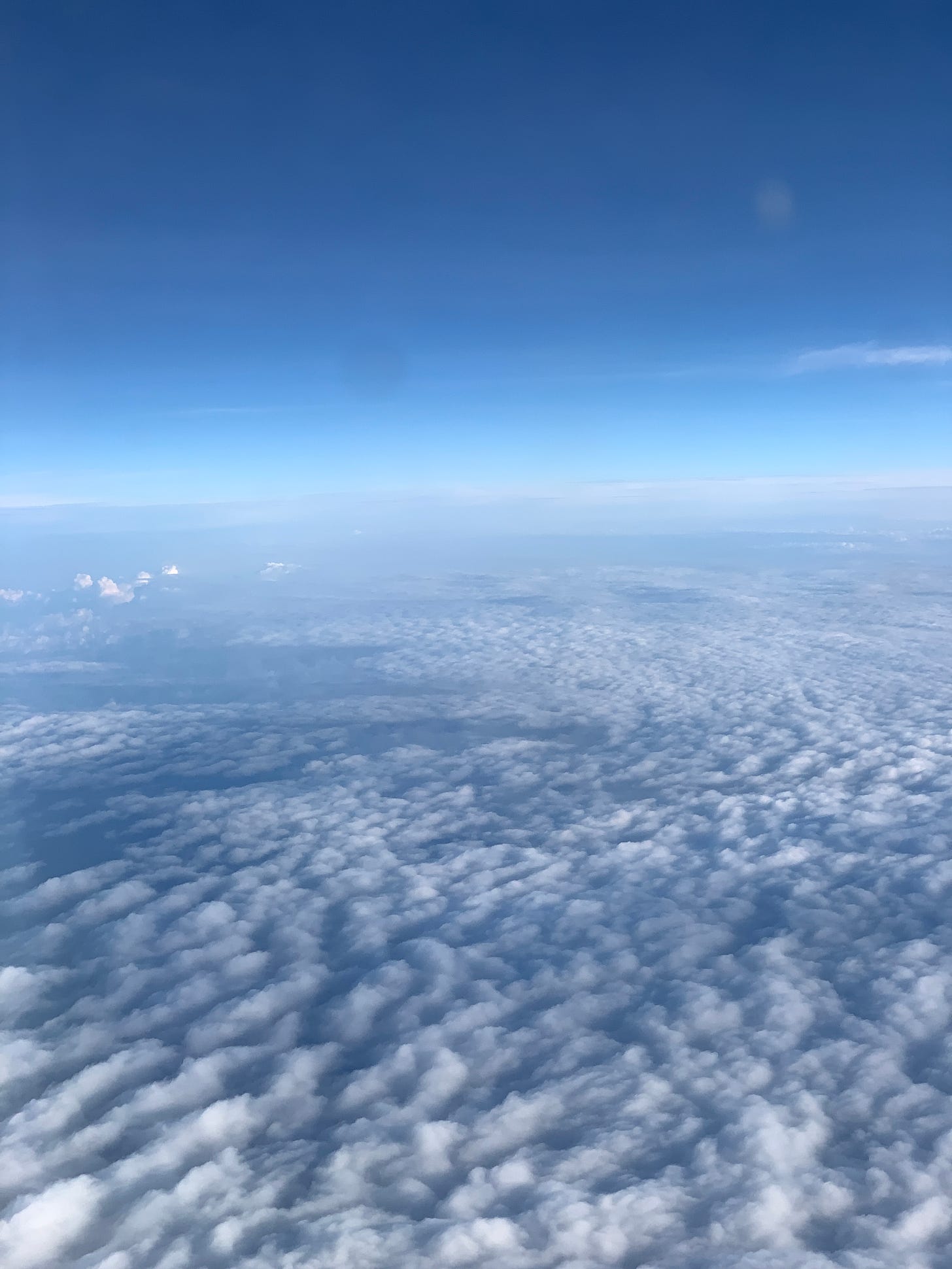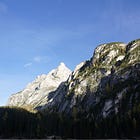Inspire your creative nature this season: join in for my upcoming workshops. To start, strengthen, or sustain a creative writing or meditation practice, schedule a virtual 1:1 session. As always, listen to these essays in podcast form, share with a friend, or ground your writing practice with a journal from Odette Press. Support these pieces with a forever discount.
“The truly precious things are those forming ladders reaching toward the beauty of the world, openings onto it.”
— Simone Weil, Waiting for God
*
“How one walks through the world, the endless small adjustments of balance, is affected by the shifting weights of beautiful things.”
— Elaine Scarry, On Beauty and Being Just
Spring blooms its way all over city streets and slopes and sidewalks. Pink rains down, and green lays the ground, surrounding the still reach of tree limbs. Red, and purple near black bursts forth; rain becomes the soundscape for a Spring symphonic: drops steady down on rooftops, the slopes of ceilings, rain a rhythm out beyond the windowsill across cities.
Spring opens. Spring brings wonder in unfolding season. Newness visits as surprise, and we delight: color, texture, ease, peta, flower, tree, growing. A sigh — the relief of warmer, longer days and the increase in light across skyline.
From the view of a morning plane, I stare out at the clouds below and beyond: I am staring into Solnit’s blue distance; staring into O’Keefe’s Sky Above Clouds, paging through Elaine Scarry’s On Beauty and Being Just. Clouds and clouds and clouds make fields of undulating air and softness; sunlight pours as if honey all across the horizon. We want to replicate beauty, as Scarry writes. There is a visceral, physical, palpable component to beauty; beauty moves us. We see something beautiful and the drive is to replicate it with your whole body; a painting; a flower; the view of another person. Beauty urges onward, into continuity. We repeat, and beauty is a practice.
The engine whirs under the wings and I notice how the plane crossing distance, brings to view the changing nature of cloud. Flying alongside the sunlight, rays of light stream in through the window as if portal an opening into beauty, beckoning, and gratitude is sunlight washing through the window seat. Sky is bright, bright blue, and I see cloud and cloud and cloud, imagining the round repeating slope of O’Keeffe’s brush, themes on distance woven and repeated throughout Solnit’s work, as the plane, moving alongside infinite perception of bright blue sky, whirs forward. What is beautiful is the light, the moment, and the forwardness — the stretch onward, into new daylight, while beyond atmosphere is the infinite dark, silent, changing, spacious night. The whole day slopes towards beauty.
Beauty is a relationship. You sense, you perceive, and you appreciate, or are sense, are perceived, and are appreciated. You matter to me, and so I want to see you, perceive you, sense you, and desire to cherish and understand you, and attend to you in presence and tenderness. Beauty “compells” us, as Scarry writes, forward, and we learn to hold each other — and ourselves — as if the same as sky, breath, petal, and ‘you’ could by sky, could be person, could be flower on the sidewalk. There is a relationship between your nature, and what we perceive often as separate, as in all of nature, and you are flower, smoke curling, cloud, leaf, rock, and skyline.
Sky, flower, season continues. And this dedication to continuity is what drives us into and toward beauty, a reciprocity that calls and says keep going. Anything we practice is continual and anything we repeat we continue to bring attention to. breath, sunlight, flower, face, idea, rhythm, horizon. “This willingness continually to revise one’s own location in order to place oneself in the path of beauty is the basic impulse underlying education. One submits oneself to other minds (teachers) in order to increase the chance that one will be looking in the right direction when a comet makes its sweep through a certain patch of sky.”
Turning attention from sky to ground, O’Keefe writes,
“A flower is relatively small. Everyone has many associations with a flower — the idea of flowers. You put out your hand to touch the flower — lean forward to smell it — maybe touch it with your lips almost without thinking — or give it to someone to please them. Still — in a way — nobody sees a flower — really — it is so small — we haven’t time — and to see takes time, like to have a friend takes time…
So I said to myself — I’ll paint what I see — what the flower is to me but I’ll paint it big and they will be surprised into taking time to look at it — I will make even busy New-Yorkers take time to see what I see of flowers.”
Rejecting beauty in terms of solely physical attributes and features, On Beauty and Being Just points to the nature of beauty; Scarry notes the structures that prompt and facilitate our experience of the perception of beauty. “First, beauty is sacred,“ she says. “Second, beauty is unprecedented.” Later: “Beauty is lifesaving.” Until the points converge, “Sacred, lifesaving, having as precedent only those things which are themselves unprecedented, beauty has a fourth feature: it incites deliberation.”
I walk deliberately toward tree, toward warmth, toward that which my desires drive me into, an onwardness into skyline, city, day, night, bird wing. Spring blooms, and cherry blossoms exhale themselves pollinated and ephemeral over the sidewalks across the city, their soft pink petals twisting into bud, warming into opening, blooming full and peak and wide, then mime the rain as they cascade down onto the sidewalk, to break down and be carried away. I watch the form of trees change, winter to spring and then beyond, as bare branches rise to bud, petal to earth, while leaves take their places, ready to shade along the lines of trees. “If you take a flower in your hand and really look at it, it's your world for a moment,” Georgia O’Keefe writes.
The power of art, like the power of nature — arguably the originator of art itself — is to move us, to inspire us, to melt us, to let us be in a state of wonder. We relate with ourselves and nature, and in that act of finding that which is “sacred”, “unprecedented”, and “lifesaving” we find our “deliberation”. This is what I hope: that looking into horizons, reading over headlines, yields us the understanding of how beauty coexists with its opposite, and yet exists in continuity as an option to look toward, aim for, and choose. This state of wonder, looking into face or flower, settles, opens, and inspires wide, eyes and hearts growing like Spring blossoms opening, into the nature of connecting. On the nature of art, Scarry notes “Matisse never hoped to save lives. But he repeatedly said that he wanted to make paintings so serenely beautiful that when one came upon them, suddenly all problems would subside.”
Beauty wakes us, rouses us, brings us alive. That which is beautiful brings us up and out: both into and out of ourselves, into something wider, like sky. We aim, we roam, we search. Scarry, speaking to the continuity of beauty, says “Something beautiful fills the mind yet invites the search for something beyond itself, something larger or something of the same scale with which is needed to be brought into relation. Beauty, according to its critics, causes us to gape and suspend all thought.” To notice beauty, to be with it, requires an attentiveness, one that draws us wakeful into the world; our eyes are open, our senses are open, and from that open body and mind we are able to perceive, through the senses, the nature of that which is beautiful. Beauty is seen, but more felt, and understood, in the larger, “life-affirming” and “life-giving” sense, as Scarry writes — and not the tangible manifestations of industries determined to sell you a story that you are anything otherwise — drives us onward. Noticing the beauty of something, “increases the possibility that it will be carefully handled.”
Rain gathers on leaves, and my plane cuts like graceful stone through waters of sky, landing. On the ground, the days are washed in atmosphere and color, and I look to feel beauty everywhere. Redbud, tulip open, bird call, lilac. Plates of food, effusing days and nights in laughter. Beauty is bright blue horizon, lake lapping at the morning. Beauty is orange roses, gathered, watered, and still, and stronger together. Present tense, memory, future, days later, I recall my own visions, memories, and cherished views of beauty. Some in cities, some alone, many with others, and many in nature. Tune my vision out into now and note the flush of April as it turns to May as sidewalks flush with growing; turn my vision in to the past, I conjure up any tactile remnants of memories in color, texture, soundscape, shape, bringing their beauty to fullest remembered form: September skies in the desert, driving; roses, bloomed, Oakland; skies in the distance the same new orange, bright red, Atlantic, Pacific, dark and pale, undulating petal pink.
“The world is blue at its edges and in its depths,” writes Solnit. And grounding into the present tense, I notice beauty close and nearby, and in the long stretch of distance. Colors come up, and beauty speaks in sound, in whispers and laughs around, in patches of flowers. “For many years, I have been moved by the blue at the far edge of what can be seen, that color of horizons, of remote mountain ranges, of anything far away,” she continues. “The color of that distance is the color of an emotion, the color of solitude and of desire, the color of there seen from here, the color of where you are not.”
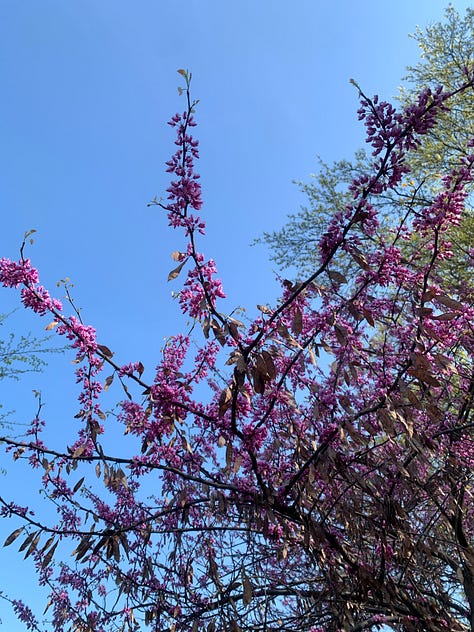
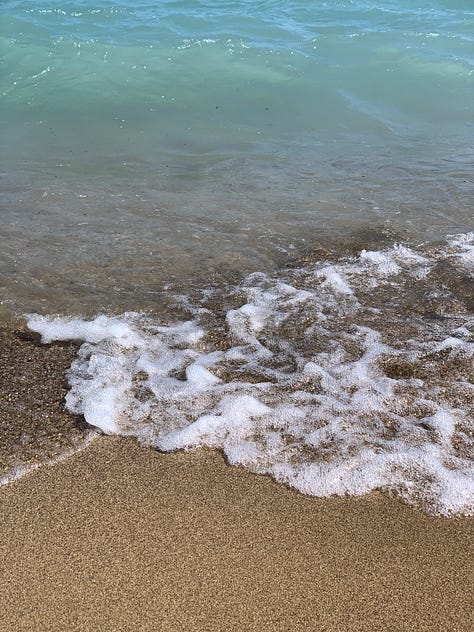
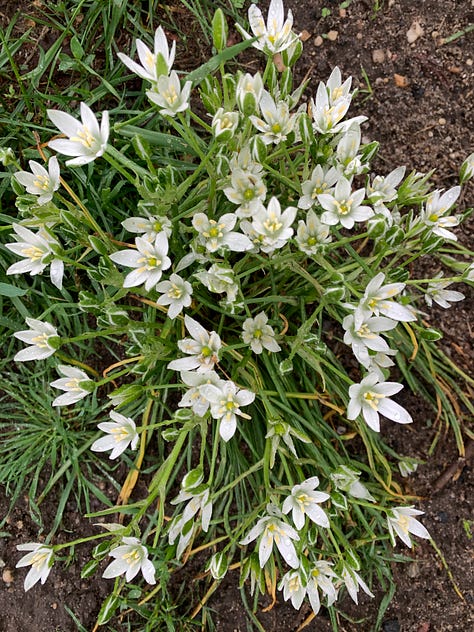
Marvel at color, at texture, at wind, at plate, at weight and lightness, of the harsh and soft of the season. Beauty is a practice, built and brought into form in repetitions. Ideas, skies, breaths, and insights repeat, yet each is ephemeral. Have you seen this rose? How about the tulip garden? The cherry blossoms? Look at this flash of skyline. Look at the fish on the plate. Look at the way you both care. Have you seen strawberries at the market? We marvel at them because we feel the contrast in Winter, in their absence. On the glow of my phone, images of skylines, and the slope of shores, and plates of food, and pictures of smiles, tulips, peonies.
Am I tuned to wonder, to decay, I wonder, or beauty? In writing this, I ask myself across the expanse of horizons, cloud lines, and days. White flowers grow from the ground knowing innately how to flower, and I find ways that life continues to grow and amaze. Beauty finds us in our perception, and the grounds of our thinking shape the stories we tell ourselves in the act of perceiving: what we notice informs our sense of beauty, and beauty finds us when we turn our attention toward that which is beautiful. An image of O’Keefe’s tulips. The miles and miles of clouds. The embrace of presence. A peony in a text from a friend, for celebration.
Beauty is blue sky, long lake, dark night, bright morning, equal in their infinities. Beauty is the work we put in, the effort, the dedication, the continuity, is rain, or the atmosphere of humidity holding longer the floral tobacco cloud that effuses outward. Beauty is softening a cough and rest as remedy. Beauty is the rosebush, from silent and wintered, out and bright, into the flush of new pink, felt and seen in both the torn petal and the lines on faces that show we still manage to smile repeatedly despite harder days. The dark marks of sun as a constellation across my arm; the clouds that hold wonder across the sky; the folds of skin from smile at the petal edges of my eyelids. This is not the beauty of consumption, of industry, of buying into some a harming aspiration, but one of recognizing, with consciousness, the profound care, serenity, and perfection of the moment: to look toward sky and eyes equally, yours or others, and acknowledge with sincerity. Can we look to ourselves as we flower or sky? Commend our own growing, wide horizons, torn petals, or the way we are growing? Let beauty be a practice. Let it guide you onward. Let it guide you.
Nourished by, Nourishing:
Reading On Beauty and Being Just by Elaine Scarry thanks to a rainy Strand afternoon. A revisit to “The Blue of Distance” a constant favorite by Rebecca Solnit. Looking to O’Keefe’s tulip paintings, and watching the season unfold in cities. Watching, with gratitude, two horizons, and the beauty of the Spring and skyline. Cooking lemon caper cod and baking pistachio citrus granola for the week.





